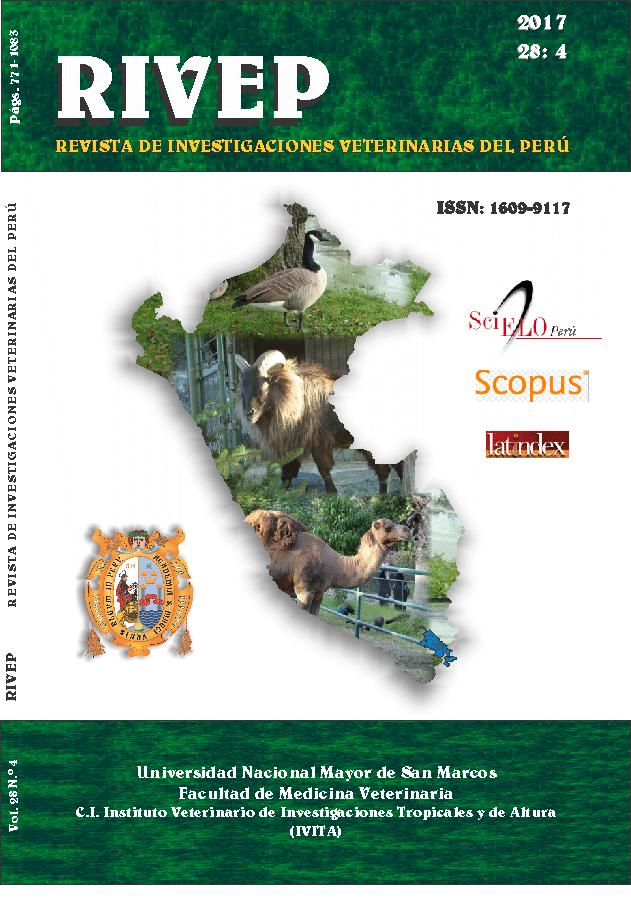Rumen degradation of diets based on post-harvest biomass of Amaranthus cruentus: effect on rumen protozoa and in vitro gas production
DOI:
https://doi.org/10.15381/rivep.v28i4.13931Keywords:
Amaranthus cruentus, protozoa, rumen degradation, in vitro gas productionAbstract
The aim of this research was to evaluate the in situ rumen degradation kinetics of nutrients, as well as the apparent digestibility of nutrients, population of rumen protozoa, and in vitro gas production of based diets from post-harvest biomass of Amaranthus cruentus. Post-harvest biomass of A. cruentus with Pennisetum clandestinum forage was mixed in dry basis according to four treatments: T1: 100% A. cruentus, T2: 100% P. clandestinum, T3: 75% P. clandestinum + 25% A. cruentus, T4: 50% P. clandestinum + 50% A. cruentus, under a completely randomized design. The ruminal degradation parameters showed differences between treatments (p<0.05) obtaining the highest effective degradation of dry matter (DM), crude protein (CP) and neutral detergent fibre (NDF) in T1 (423.4, 404.1 and 354.5 g/kg, respectively). The in vitro digestibility of DM, organic matter (OM) and CP was higher (p<0.05) in T1 (60, 68 and 59% respectively) and T4 (53, 61 and 51% respectively). The lowest in vitro gas production was for T1, with a difference of approximately 91 ml/0.5 mg fermented DM with respect to the other treatments (p=0.0001). The lowest (p=0.0026) population of protozoa Holotrichs and Entodinomorphs was observed in T1 (0 and 1.80 log10 respectively). It is concluded that the post-harvest biomass of A. cruentus when incorporated into the diet of ruminants, can increase the degradation and digestibility of nutrients, and reduce the production of greenhouse gases and populations of protozoa of the rumen.Downloads
Downloads
Published
Issue
Section
License
Copyright (c) 2017 M. Barros-Rodríguez, J. Oña-Rodríguez, R. Mera-Andrade, J. Artieda-Rojas, S. Curay-Quispe, D. Aviles-Esquivel, J. Solorio-Sánchez, C. Guishca-Cunuhay

This work is licensed under a Creative Commons Attribution-NonCommercial-ShareAlike 4.0 International License.
AUTHORS RETAIN THEIR RIGHTS:
a. Authors retain their trade mark rights and patent, and also on any process or procedure described in the article.
b. Authors retain their right to share, copy, distribute, perform and publicly communicate their article (eg, to place their article in an institutional repository or publish it in a book), with an acknowledgment of its initial publication in the Revista de Investigaciones Veterinarias del Perú (RIVEP).
c. Authors retain theirs right to make a subsequent publication of their work, to use the article or any part thereof (eg a compilation of his papers, lecture notes, thesis, or a book), always indicating the source of publication (the originator of the work, journal, volume, number and date).










